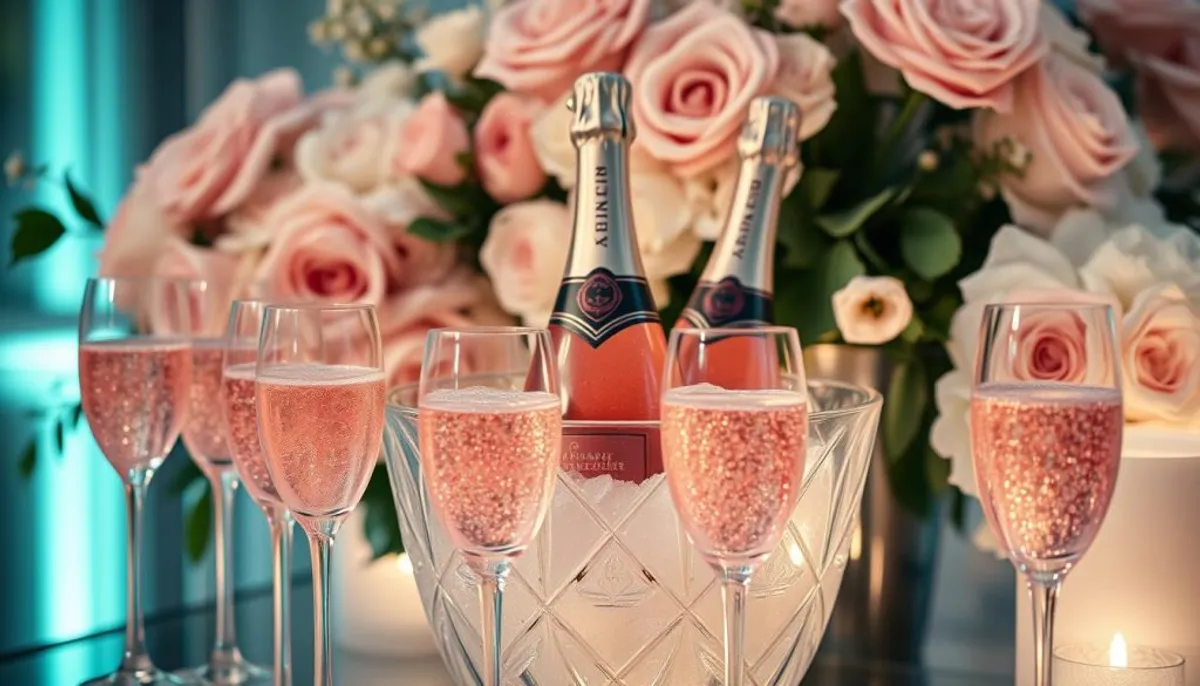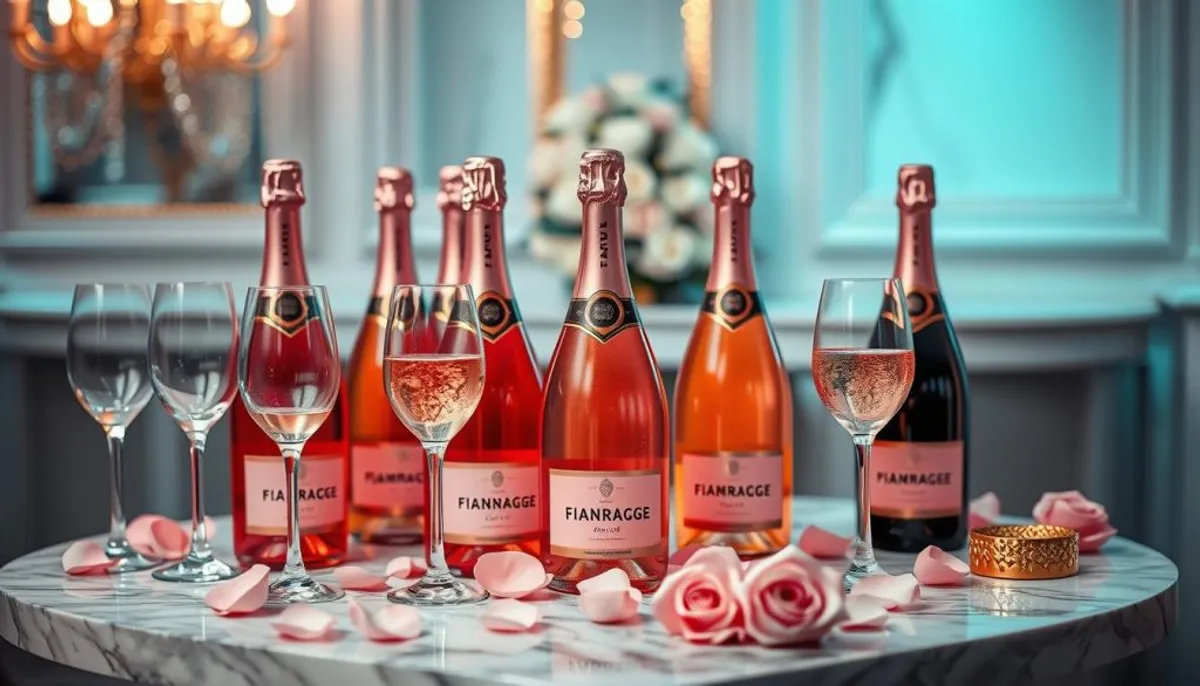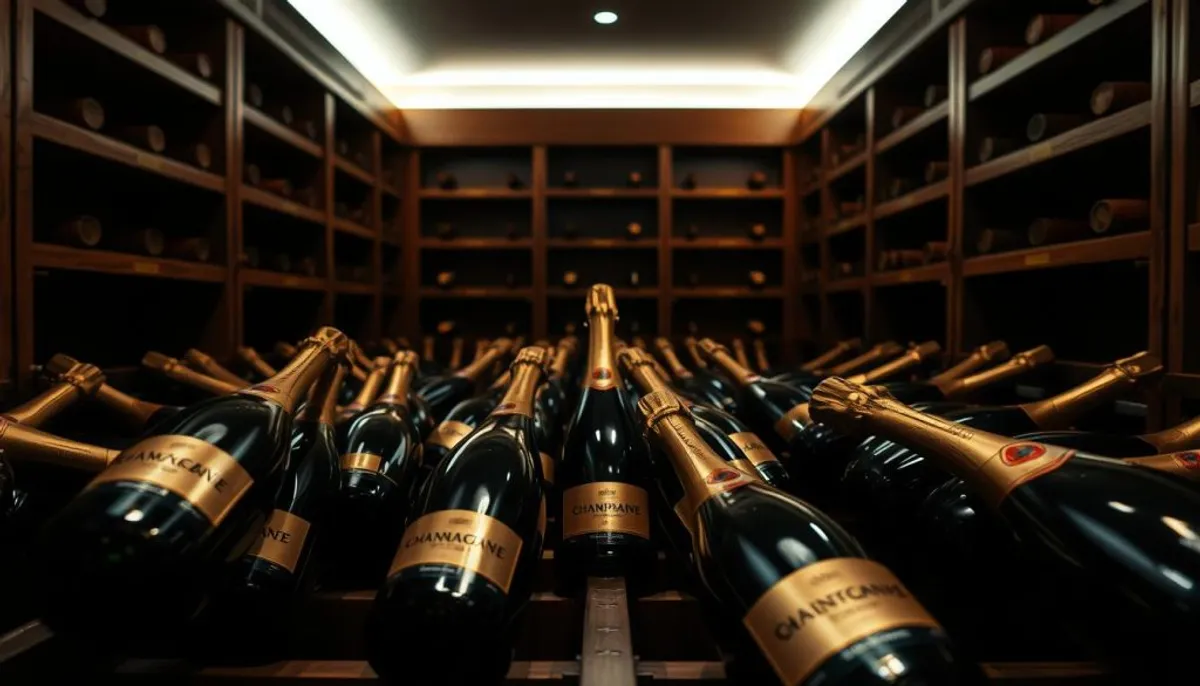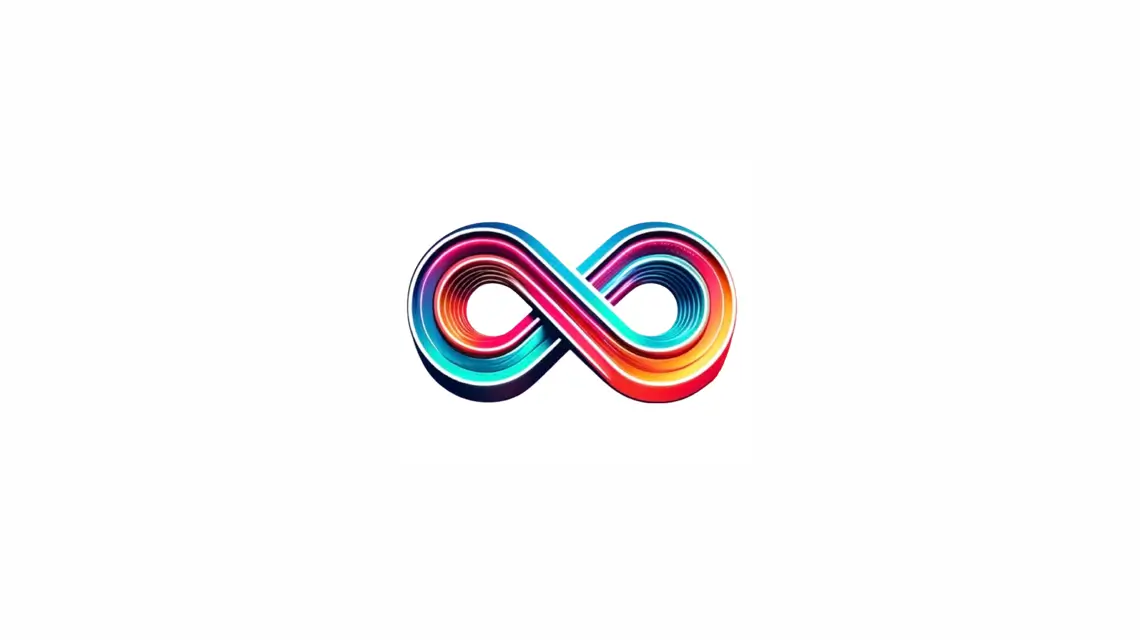Pink champagne has surged in popularity, becoming a staple for special occasions. It offers a unique blend of elegance and celebration. Whether it’s a wedding or an anniversary, the finest pink champagne elevates any event with its sophistication.
Rosé champagne production has skyrocketed by 40% between 2002 and 2018. This increased demand has led to a wide array of choices, from affordable options to premium bottles. Whether you seek a mid-range quality or a high-end selection, there’s a pink champagne for every taste and budget.

Renowned producers like Louis Roederer, Krug, and Dom Pérignon have perfected the art of rosé champagne. These luxury wines command a higher price due to their specialized production and the escalating costs of top cru Pinot Noir grapes.
Key Takeaways
- Pink champagne consumption has grown by 40% from 2002 to 2018
- Top producers include Louis Roederer, Krug, and Dom Pérignon
- Prices vary widely, with options for every budget
- Specialized production methods contribute to higher costs
- Rosé champagne is ideal for weddings, anniversaries, and other special occasions
Understanding Pink Champagne: Origins and Production
Pink champagne, a quintessence of luxury and celebration, traces its origins to the mid-18th century. The narrative of rosé champagne production commences with Champagne Ruinart in 1764, initiating a profound journey in winemaking.
The History of Rosé Champagne Making
Veuve Clicquot significantly influenced rosé champagne production. In 1818, Madame Barbe-Nicole Ponsardin introduced the assemblage method, a groundbreaking technique in champagne making. This method entails blending white and red wines to achieve the distinctive pink color.
Traditional Production Methods
Two primary methods predominate in rosé champagne production. The saignée method, a traditional technique, involves macerating red grape skins with clear juice. On the other hand, the assemblage method, pioneered by Veuve Clicquot, combines white and red wines before undergoing secondary fermentation.
Saignée vs. Blending Techniques
The saignée method enables winemakers to modulate color and flavor by adjusting the maceration duration. In contrast, the blending method facilitates the creation of uniform pink cuvées with precision. Both methods contribute to the varied range of sparkling rosé styles available today.
| Method | Process | Result |
|---|---|---|
| Saignée | Maceration of red grape skins | Varied color and flavor intensity |
| Blending | Mixing white and red wines | Consistent pink hue and flavor profile |
What Makes Pink Champagne Special and Expensive
Pink champagne is a luxury wine, priced higher than its white counterparts. Its allure comes from a unique production process and market dynamics.
Premium Grape Selection Process
The journey of pink champagne starts with premium champagne grapes. Veuve Clicquot, a renowned producer, dedicates a winery to crafting pinot noir wines for their rosé blends. This dedication ensures only the highest quality grapes are used.
Market Demand and Pricing Factors
Rosé champagne production is less than 5% of all champagne output, making it rare. This scarcity, combined with growing popularity, increases prices. The labor-intensive process, including longer aging periods, also contributes to the cost. For instance, Billecart-Salmon Rosé ages for three years on the lees, exceeding the minimum requirement by a significant margin.
Investment Value of Pink Champagne
Champagne investment has become popular among wine enthusiasts. Brands like Dom Pérignon Rosé and Krug Rosé are seen as excellent investment opportunities. The Dom Pérignon Rosé 2009, aged for 12 years, is a prime example of the value and longevity of top-tier pink champagnes. These vintages are highly sought after for their aging potential, often appreciating in value over time.
| Champagne | Blend | Aging Period |
|---|---|---|
| Krug Rosé 27ème Édition | 57% Pinot Noir, 23% Chardonnay, 20% Meunier | Based on 2015 harvest |
| Dom Pérignon Rosé 2009 | Pinot Noir-forward blend | 12 years |
| Veuve Clicquot La Grande Dame Rosé 2012 | 90% Pinot Noir | 9th edition vintage |
Best Pink Champagne Selections for Celebrations
Pink champagne has seen a surge in popularity for special occasions. In recent years, rosé champagne has made up 18% of U.S. champagne imports, a significant increase from just 3% two decades ago. With nearly six million bottles sold in 2022, Americans are embracing this festive drink. Let’s explore some top choices for your next celebration.
Luxury Premium Choices
For those seeking the best pink champagne brands, luxury options abound. Louis Roederer Cristal Brut Rose 2012 stands out with its exquisite taste and hefty price tag. Krug Brut Rosé Champagne offers unparalleled quality, while Dom Pérignon Rosé Vintage 2004 remains a classic choice for connoisseurs.
Mid-Range Quality Options
Bollinger La Grande Annee Rose 2012 provides excellent value in the mid-range category. This blend of 62% Pinot Noir, 24% Chardonnay, and 14% Pinot Meunier delivers a complex flavor profile. Moet & Chandon Rose Imperial is another stellar option, balancing quality and affordability.
Budget-Friendly Selections
For affordable rosé champagne, consider Simpsons Wine Estate Canterbury Rosé 2019 or Ca’ di Rajo Rosé Brut Prosecco Treviso DOC Millesimato 2019. These options offer great taste without breaking the bank.

| Category | Brand | Price Range | ABV |
|---|---|---|---|
| Luxury | Louis Roederer Cristal Brut Rose 2012 | $620+ | 12.5% |
| Mid-Range | Bollinger La Grande Annee Rose 2012 | $90+ | 12% |
| Budget-Friendly | Ca’ di Rajo Rosé Brut Prosecco Treviso DOC 2019 | $20+ | 12% |
Tasting Notes and Flavor Profiles
Pink champagne flavors present a wide array of taste experiences. Upon the first sip, the palate is greeted by vibrant red fruit notes. Strawberries and cherries dominate, accompanied by subtle floral undertones. The tasting notes of rosé champagne reveal a complex interplay of flavors, often featuring hints of brioche and fresh bread. To enhance your celebrations, consider adding personalized champagne toppers for a unique touch.
Champagne aromas are integral to the overall experience. As the glass is brought to the nose, enticing scents of chalk and minerals emerge, enriching the bouquet. The color of pink champagne varies from pale blush to deeper salmon hues, each shade reflecting the unique character within.
| Champagne | Flavor Profile | Price Range |
|---|---|---|
| Louis Roederer Cristal Brut Rose 2012 | Strawberries, blackberries, peach, almonds | £80 |
| Krug Brut Rosé | Gingerbread, coffee, orange peel | £334 |
| Laurent-Perrier Rosé NV | Pure Pinot Noir | £68 |
The price range for pink champagnes spans from £18 to £334, with an average of about £54. Luxury champagnes like Dom Ruinart Rosé command high prices, while budget-friendly options such as Kylie Minogue’s Alcohol-Free Sparkling Rosé start at £7. Renowned champagne houses offer a variety of pink champagnes, catering to diverse tastes and occasions.
Food Pairing Guide for Pink Champagne
Pink champagne food pairings embark on a delightful journey for your taste buds. The versatility of rosé champagne cuisine makes it an excellent choice for various dishes. Let’s explore the perfect matches for this effervescent delight.
Appetizers and Starters
Kick off your meal with appetizers that complement the bubbly notes of pink champagne. Seafood starters like fresh oysters or shrimp cocktails pair beautifully. A charcuterie board featuring thinly sliced prosciutto and soft cheeses like brie or camembert creates a harmonious blend of flavors.
Main Course Pairings
For the main course, rosé champagne shines with a variety of dishes. Grilled chicken or duck breast offer a delicious contrast to the wine’s fruitiness. Surprisingly, it also pairs well with hearty dishes like beef stew, breaking traditional pairing rules. Sushi and Asian-inspired cuisine make excellent choices for champagne and food combinations.
Dessert Combinations
End your meal on a sweet note with desserts that enhance the pink champagne experience. Fruit-based treats like strawberry tarts or berry pavlova complement the wine’s crisp acidity. A simple fruit salad can also be a refreshing finale to your rosé champagne cuisine adventure.
| Course | Recommended Pairings |
|---|---|
| Appetizers | Oysters, Shrimp cocktail, Charcuterie, Soft cheeses |
| Main Course | Grilled chicken, Duck breast, Beef stew, Sushi |
| Dessert | Strawberry tart, Berry pavlova, Fruit salad |
Serving and Storage Tips

Proper storage of champagne is essential for preserving its quality. Store bottles in a cool, dark environment with temperatures ranging from 45°F to 55°F (7°C to 13°C). For extended storage, position bottles horizontally to maintain cork moisture.
When it’s time to serve, understanding the right way to serve pink champagne is paramount. Chill the bottle to the optimal temperature of 47°F to 50°F (8°C to 10°C). Utilize champagne flutes or white wine glasses to maintain effervescence and enhance the bouquet.
Pour champagne with a gentle motion, holding the glass at a slight angle. Fill the glass to about two-thirds capacity to allow the aroma to flourish. In social gatherings, serve women first, followed by men, and then the host.
| Aspect | Recommendation |
|---|---|
| Storage Temperature | 45°F – 55°F (7°C – 13°C) |
| Serving Temperature | 47°F – 50°F (8°C – 10°C) |
| Glassware | Champagne flutes or white wine glasses |
| Pouring Technique | Gentle, at an angle, fill 2/3 full |
| Serving Order | Women, men, host |
Pink champagne complements a variety of dishes. It pairs well with caviar, soft cheeses, oysters, or fruit-based desserts, offering a delightful culinary experience.
Special Occasion Recommendations
Pink champagne brings a touch of elegance to life’s most significant moments. It’s ideal for weddings, anniversaries, and Valentine’s Day, enhancing any celebration. Here, we’ll dive into some top picks for these occasions.
Wedding Selections
Choosing champagne for weddings is crucial, as it should be as memorable as the day. The Billecart-Salmon Brut Rosé, at £65, is a luxurious choice. Its enticing strawberries-and-cream scents are perfect for wedding celebrations. For those on a budget, the Graham Beck Brut Rosé at $18.99 is a quality option without the high cost.
Anniversary Choices
Anniversary champagne needs to be something truly special. The Laurent Perrier Cuvée Rosé, at £65, is a standout choice. Made from 100% pinot noir grapes, it’s renowned for its excellence. For a unique flavor, consider the British Nyetimber Rosé NV at £41.99, with its strawberry, raspberry, and cherry notes.
Valentine’s Day Picks
Valentine’s Day rosé should be both romantic and indulgent. The Schramsberg Mirabelle Brut Rosé at $24.99 is a great balance of quality and affordability. For those who prefer a non-alcoholic option, the Vilarnau 0% Sparkling Rosé at £6.99 is a delightful choice, offering a fun fizz without alcohol.
| Occasion | Champagne | Price |
|---|---|---|
| Wedding | Billecart-Salmon Brut Rosé | £65 |
| Anniversary | Laurent Perrier Cuvée Rosé | £65 |
| Valentine’s Day | Schramsberg Mirabelle Brut Rosé | $24.99 |
The ideal champagne is one that aligns with your taste and budget. Whether celebrating a wedding, anniversary, or Valentine’s Day, these recommendations offer a variety of choices to make your occasion unforgettable.
Vintage vs Non-Vintage Pink Champagne
Pink champagne is divided into two primary categories: vintage rosé champagne and non-vintage pink champagne. The primary distinction is based on the champagne years employed in their creation. Vintage rosés are produced from grapes of a single, outstanding year. In contrast, non-vintage blends combine wines from various years.
Vintage rosé champagnes, such as Dom Perignon and Louis Roederer Cristal, are known for their aging potential, lasting 10-25 years. These exclusive bottles command a premium price and are highly sought after by collectors. On the other hand, non-vintage pink champagnes focus on consistency, offering dependable quality at a more accessible price.
The production methodologies for both categories differ significantly. Non-vintage pink champagnes must undergo at least 15 months of bottle aging before release, with a minimum of 12 months on lees. In contrast, vintage rosés require a minimum of 3 years of aging, which contributes to their more intricate flavor profiles.
| Characteristic | Vintage Rosé Champagne | Non-Vintage Pink Champagne |
|---|---|---|
| Production Years | Single exceptional year | Blend of multiple years |
| Aging Potential | 10-25 years | 2-3 years |
| Minimum Aging | 3 years | 15 months |
| Price Point | Higher | Lower |
| Flavor Profile | Complex, unique to the year | Consistent, balanced |
In selecting between vintage and non-vintage pink champagnes, one must consider the event’s significance and personal budget. For everyday celebrations, a non-vintage champagne offers great value. For significant occasions or for those seeking a unique collector’s item, investing in a vintage rosé champagne allows you to savor the distinct characteristics of a particular year’s harvest.
Top Champagne Houses Known for Rosé
The realm of rosé champagne is teeming with both venerable producers and cutting-edge brands. These premier rosé champagne houses have mastered the art of creating pink bubbly, often showcased through stunning champagne bottle photography. They offer a diverse array of styles and price points, catering to every occasion.
Historical Producers
Ruinart, established in 1729, is one of the oldest champagne houses. Their Ruinart Rosé, priced at $88, showcases their centuries-long mastery. Veuve Clicquot, founded in 1772, is celebrated for its Yellow Label Brut and Rosé Champagne. The Veuve Clicquot Rosé, available for $50, provides a historical taste at a more affordable price.
Modern Innovators
Laurent-Perrier is notable among modern champagne producers for its Brut Rosé, priced at $80. This 100% Pinot Noir rosé exemplifies contemporary winemaking techniques. Louis Roederer, famous for Cristal Rosé, represents the epitome of luxury in pink champagne.
| Champagne House | Signature Rosé | Average Price |
|---|---|---|
| Ruinart | Ruinart Rosé NV | $97 |
| Veuve Clicquot | Brut Rosé NV | $75 |
| Laurent-Perrier | Cuvée Rosé NV | $96 |
| Billecart-Salmon | Brut Rosé NV | $96 |
The rosé champagne market spans from grand maisons to boutique producers, offering a wide range of choices. Whether you lean towards the traditional methods of historical houses or the innovative techniques of modern brands, there’s a rosé champagne to enhance your next celebration.
Investment and Collecting Guidelines
Champagne investment has seen a surge in recent years, with rosé champagne becoming a highly sought-after asset. The global consumption of rosé champagnes skyrocketed by 40% between 2002 and 2018. This significant increase in demand has led to a notable rise in champagne value, notably for premium rosé varieties.
When collecting rosé champagne, it is essential to focus on vintage releases from esteemed houses. Louis Roederer Cristal Brut Rose 2012, priced at $620+, and Dom Pérignon Rosé Vintage 2004, at $260+, stand out as prime investment choices. These prestigious cuvées often fetch nearly double the price of their non-rosé counterparts.
- Vintage quality
- Brand reputation
- Storage conditions
- Critic scores
- Market trends
Proper storage is paramount for preserving champagne value. Some rosé champagnes can age well for decades, potentially increasing their worth. For newcomers to collecting rosé champagne, mid-range options like Bollinger La Grande Annee Rose 2012 ($90+) or Moet & Chandon Rose Imperial ($58+) provide quality at more accessible price points.
As the champagne market continues to expand, with a predicted 6.2% CAGR between 2020-2025, astute investors can seize this sparkling opportunity.
Conclusion
Our pink champagne guide has unveiled a world of effervescent elegance. From the pale salmon hues to vibrant coral tones, rosé champagne offers a spectrum of flavors to suit every palate. The best rosé champagne selections blend tradition with innovation, using key grape varieties like Pinot Noir, Chardonnay, and Pinot Meunier.
Esteemed houses like Veuve Clicquot, Laurent-Perrier, and Bollinger have perfected their craft over centuries. These brands, along with Dom Perignon and Krug, dominate the top-tier market. Their rosé champagnes showcase the intricate production methods that justify their premium pricing.
When exploring champagne recommendations, consider serving temperature (8-10°C) and food pairings. Rosé champagne complements a wide range of dishes, from seafood to spicy cuisine. Whether you’re celebrating a special occasion or simply enjoying a summer evening, there’s a pink champagne perfect for every moment.
RelatedRelated articles



